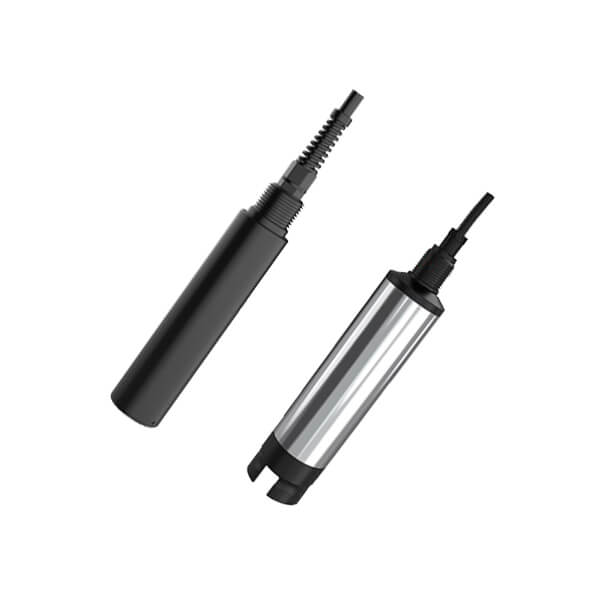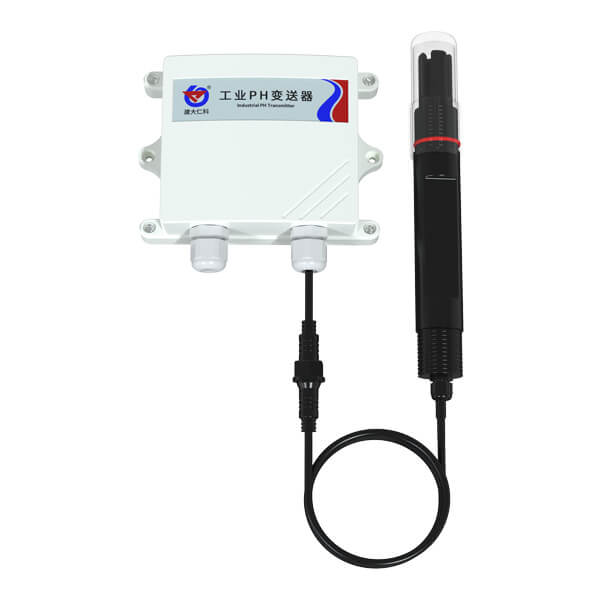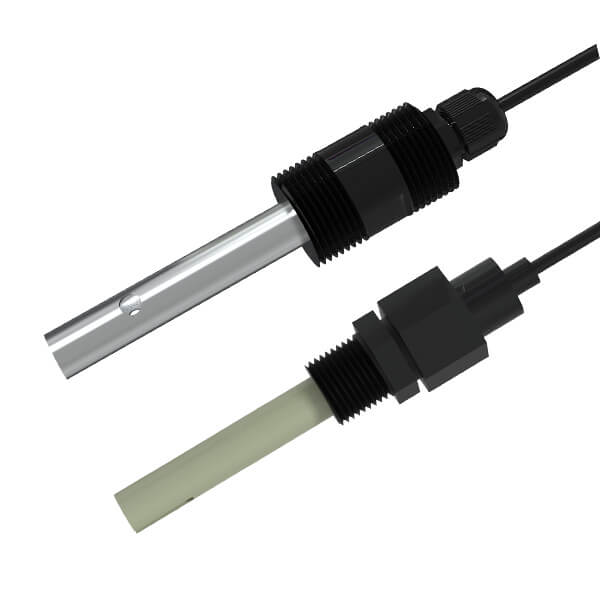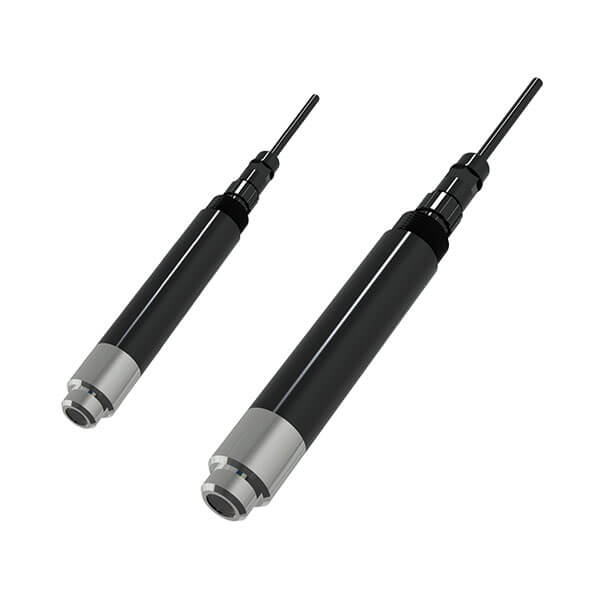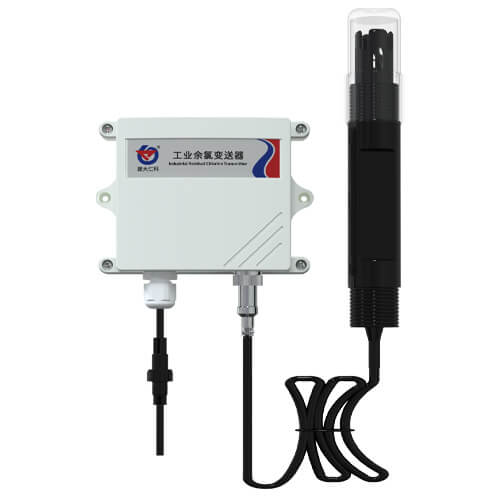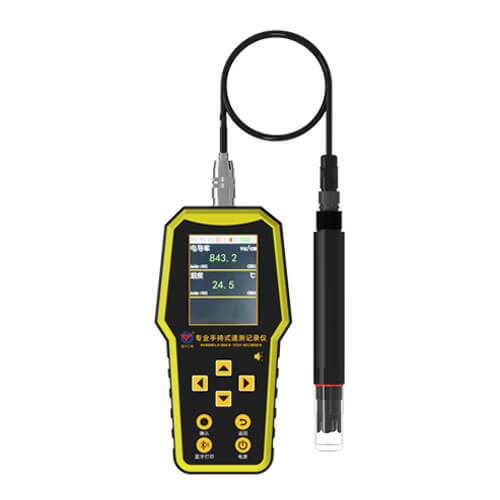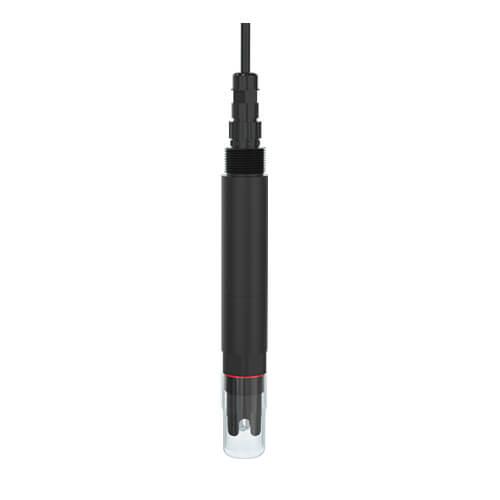Table of Contents In daily life, industrial production, and laboratory research, the terms “distilled water” and “purified water” are often
Turbidity Sensor
The turbidity sensor is a water quality sensor that utilizes an RS485 communication interface and the standard Modbus protocol. It uses an infrared LED with a wavelength of 860nm as the light source, which is not affected by the color of the water sample. The turbidity probe is equipped with an automatic cleaning brush, and the housing is waterproof with a high protection rating of up to IP68. The turbidity sensor can be used for measuring rivers and streams, wastewater and sewage, sedimentation tank control, sediment transport research, and laboratory measurements.
- Model: RS-ZD-N01-*-EX
- MOQ: 1 PCS
- Delivery date: within 24 hours
- Price: USD 125.80
View - Turbidity Sensor
Turbidity is caused by suspended particles in water, which scatter the incident light. Typically, a 90-degree angle scattering light is used as the testing signal. The relationship between scattered light and turbidity follows a multi-segment linear relationship, requiring the turbidity sensor to be calibrated at multiple points. Additionally, variations in light source intensity and temperature can affect the accuracy of measurements. Through multiple experimental studies and calculations, we have developed a turbidity sensor with temperature compensation capability, high accuracy, and good stability.
RS-ZD-N01-EX is an online water quality monitoring digital turbidity sensor. It adopts the mature 90° scattering light principle and incorporates fiber optic technology into the turbidity sensor, providing superior repeatability and stability while being less susceptible to environmental light interference. When used in conjunction with the sensor’s automatic cleaning brush, it effectively removes bubbles and reduces the impact of contamination on measurements, prolonging the maintenance cycle and maintaining excellent stability even during long-term online use. The sensor also incorporates a built-in filter algorithm, enhancing its resistance to external light interference. It features a built-in temperature transmitter that enables automatic temperature compensation, making it suitable for long-term online monitoring in various environments.
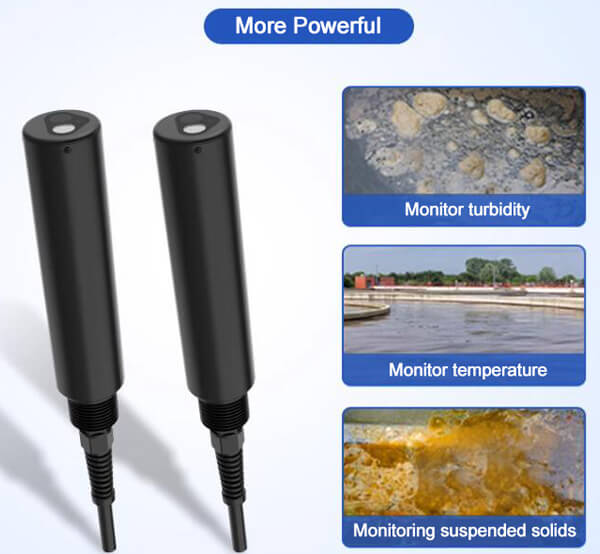
Turbidity Sensor Datasheets
| Power supply | DC 10~30V |
| Power consumption | 0.2W |
| Measuring range | 0.00~50.00NTU; 0.0~200.0NTU; 0.0~1000.0NTU; 0~4000NTU |
| Accuracy | ±5%FS (25°C); ±0.5°C |
| Resolution | 0.01NTU(0.00~50.00NTU); 0.1NTU(0.0~200.0NTU); 0.1NTU(0.0~1000.0NTU); 1NTU(0~4000NTU); Temperature: 0.1°C |
| Response time | ≤30sec |
| Working condition | 0~40℃ |
| Working principle | 90° light scattering method |
| Using life | 2 years in normal use |
| Protect class | IP68 |
| Wire length | default 5m (customized) |
| Housing material | Corrosion-resistant plastic |
Turbidity Sensor Advantages
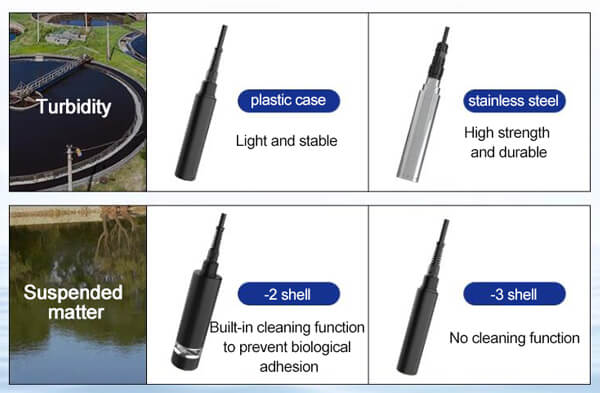
8. The turbidity sensor adopts a 3/4NPT tapered thread, making installation and fixation more convenient
1.The monitoring principle of 90-degree angle scattering light ensures accurate and stable measurements and is suitable for long-term online monitoring in various environments without being affected by magnetic fields.
2. It has a built-in temperature transmitter with automatic temperature compensation function, reducing the interference of temperature on measurement results.
3. It adopts a fiber optic structure, which has strong resistance to external light interference.
4. The infrared LED light source provides high stability, convenience, speed, and ease of maintenance.
5. The turbidity sensor undergoes strict calibration before leaving the factory, eliminating the need for secondary calibration. It can be used immediately upon receipt, allowing for quick deployment.
6. It has an IP68 protection rating, with waterproof housing that enables normal usage in water depths of up to 20 meters.
7. The surface of the turbidity probe is treated with corrosion and passivation, ensuring a lifespan of 2 years or more.
Turbidity Sensor FAQs
A turbidity sensor is a device that utilizes optical principles to measure the turbidity of water. The lower the amount of light that can pass through, the higher the turbidity of the water sample. It is widely used in areas such as water quality monitoring, wastewater treatment, water treatment plants, and water feature engineering.
- Place the turbidity sensor into a standard turbidity solution with a value of 0 NTU (deionized water). Calibration can be performed in a dark and clean air environment with less stringent requirements. Once the reading becomes stable, send the zero-point calibration command.
- Next, place the turbidity sensor into a standard turbidity solution corresponding to the maximum range. Once the reading becomes stable, send the full-scale calibration command to complete the turbidity calibration.
- Note: During the calibration process, ensure that there are no bubbles attached to the optical window of the transmitter. Maintain a distance of at least 7 cm between the transmitter and the bottom of the container.
- Please do not attempt to open or repair the turbidity meter yourself in case of any noticeable faults. Contact us as soon as possible for assistance.
- Before taking measurements, remove the black rubber protective cover.
- Regularly clean the adhered substances on the sensor probe according to the usage environment, as they can cause measurement errors. Avoid scratching the light-guiding part of the probe during cleaning. (It is recommended to clean every 30 days)
- It is recommended to rinse the outer surface of the turbidity sensor with running water. If there are still residues, use a soft damp cloth to wipe it clean.
- Calibrate the device before each use, and for long-term use, it is recommended to calibrate every 3 months. The calibration frequency should be adjusted accordingly based on the specific usage environment (degree of dirtiness in the application, deposition of chemicals, etc.).
When a beam of light is directed into a water sample, the turbidity particles in the water cause the light to scatter. By measuring the intensity of the scattered light in the direction perpendicular to the incident light and comparing it with internal calibration values, the turbidity of the water sample is calculated. The final value is obtained through linearization processing and is outputted as the result.
Our turbidity sensor comes with an NPT 3/4 thread, which can be used in conjunction with our waterproof conduit. The cable should be threaded through the conduit, and the turbidity sensor can be screwed into the thread of the waterproof conduit.
Note: Install the turbidity sensor in an area with slow water flow and no bubbles. Maintain a distance of 5 cm from surrounding walls during installation, and ensure that there are no obstacles within 7 cm below the sensor.
Temperature variations have an impact on the electrical output of the sensor. Even if the turbidity level remains constant, fluctuations in temperature can alter the turbidity readings. This influence can be addressed by incorporating a temperature compensation feature.
Related Blogs
What is dissolved oxygen? Dissolved oxygen (DO) refers to molecular oxygen dissolved in water. The unit is mg/L, which means
Long-term rainfall and melting snow have raised water levels and flooded city roads, causing flooding. Frequent and extreme flooding is
The commonly used communication method for data acquisition and control is RS485. RS485 is a general communication standard. It can
With the development of Internet of Things technology, sensors and wireless transmission technology are widely used in smart agriculture. Smart
Measuring tilt angles is an important part of geometric metrology. The range of angle measurement is wide. According to the
Table of Contents Everyone knows that the choice of water quality sensors is very important. In water measurement, the ph
Natural disasters such as floods and heavy rains pose threats to lives and property around the world. Without a proper
Table of Contents Water is the source of life, integral to every aspect of human production and daily living. In
Table of Contents What is a water level sensor? The water level sensor is a device that measures the liquid

